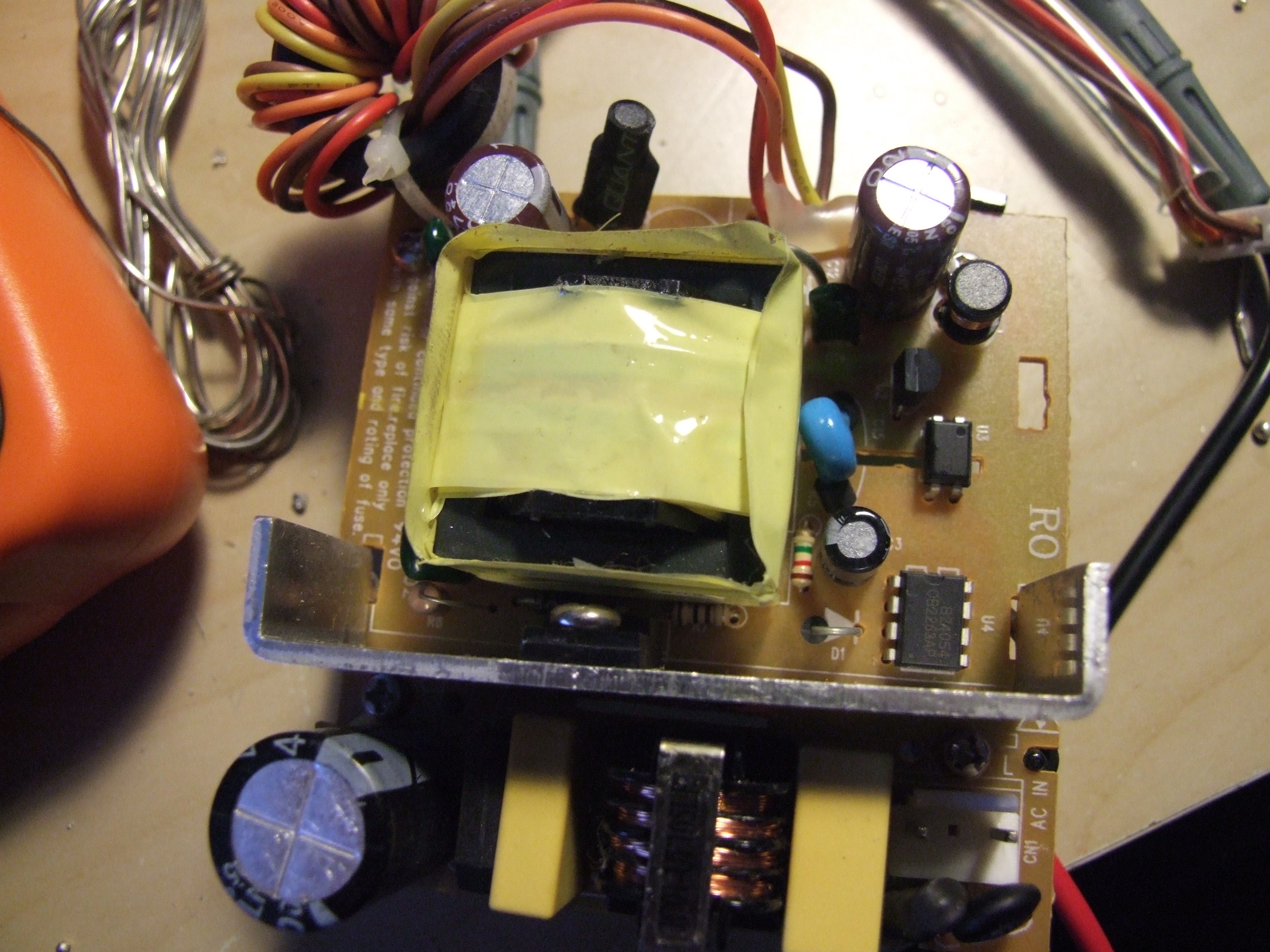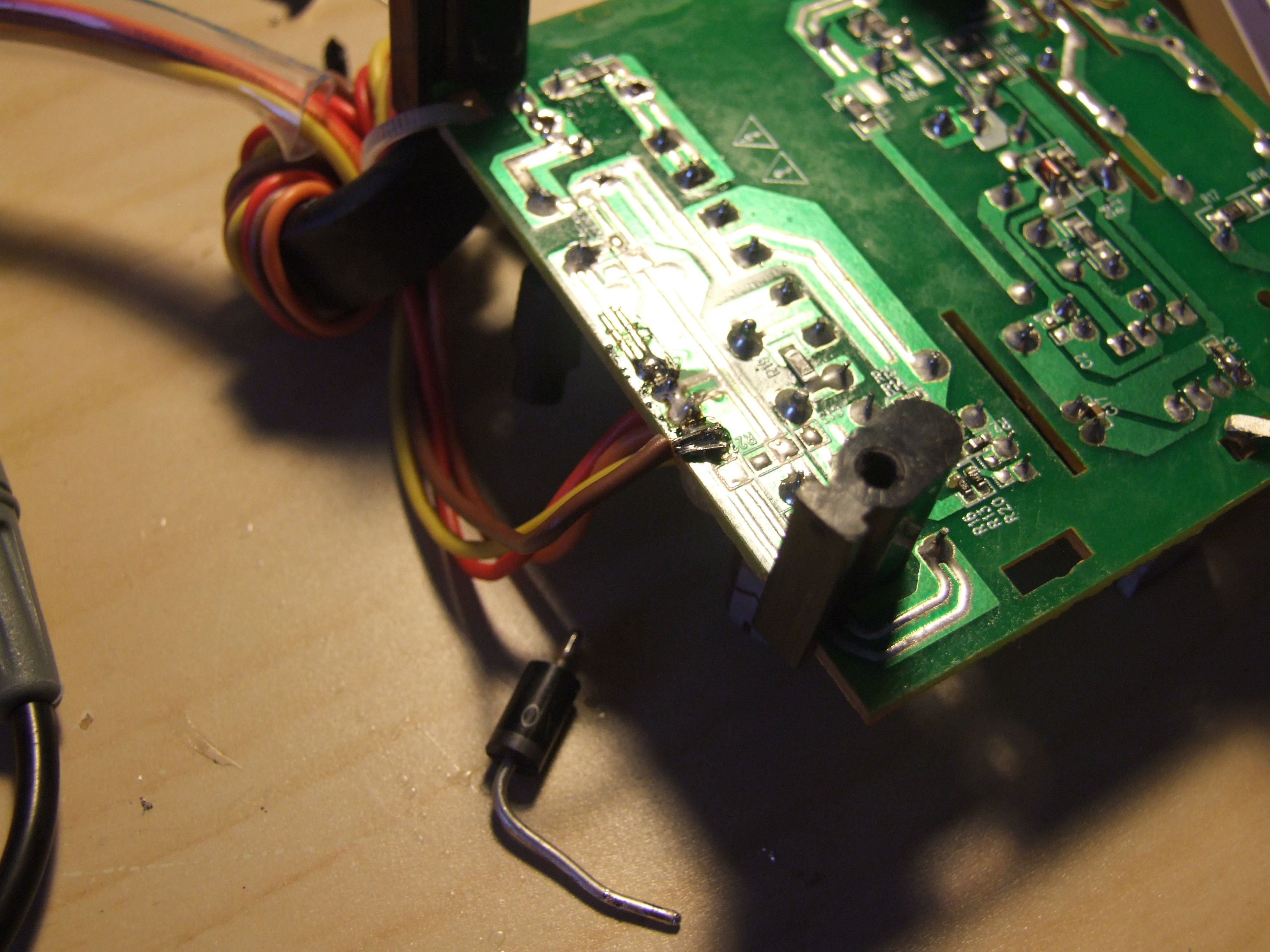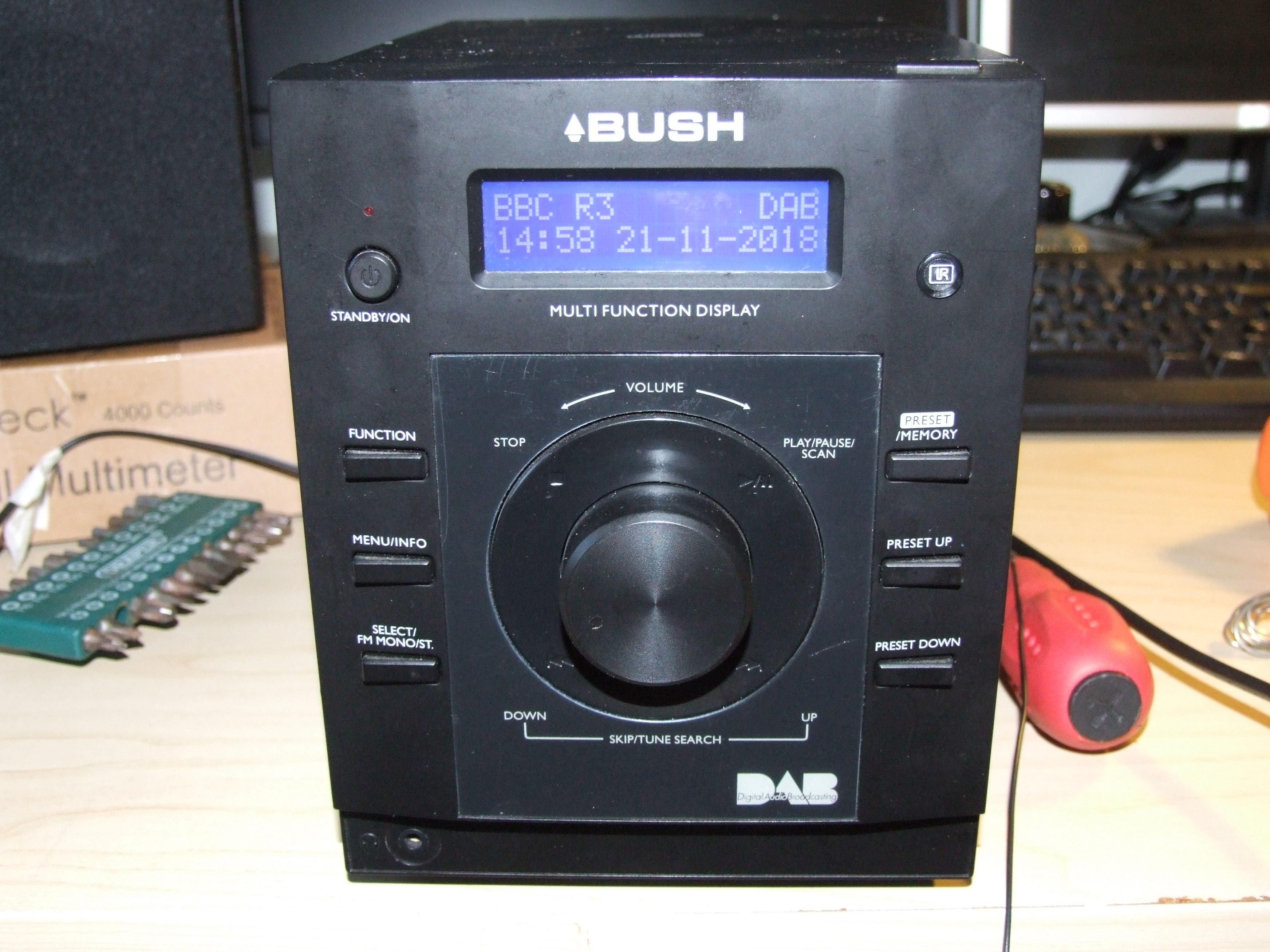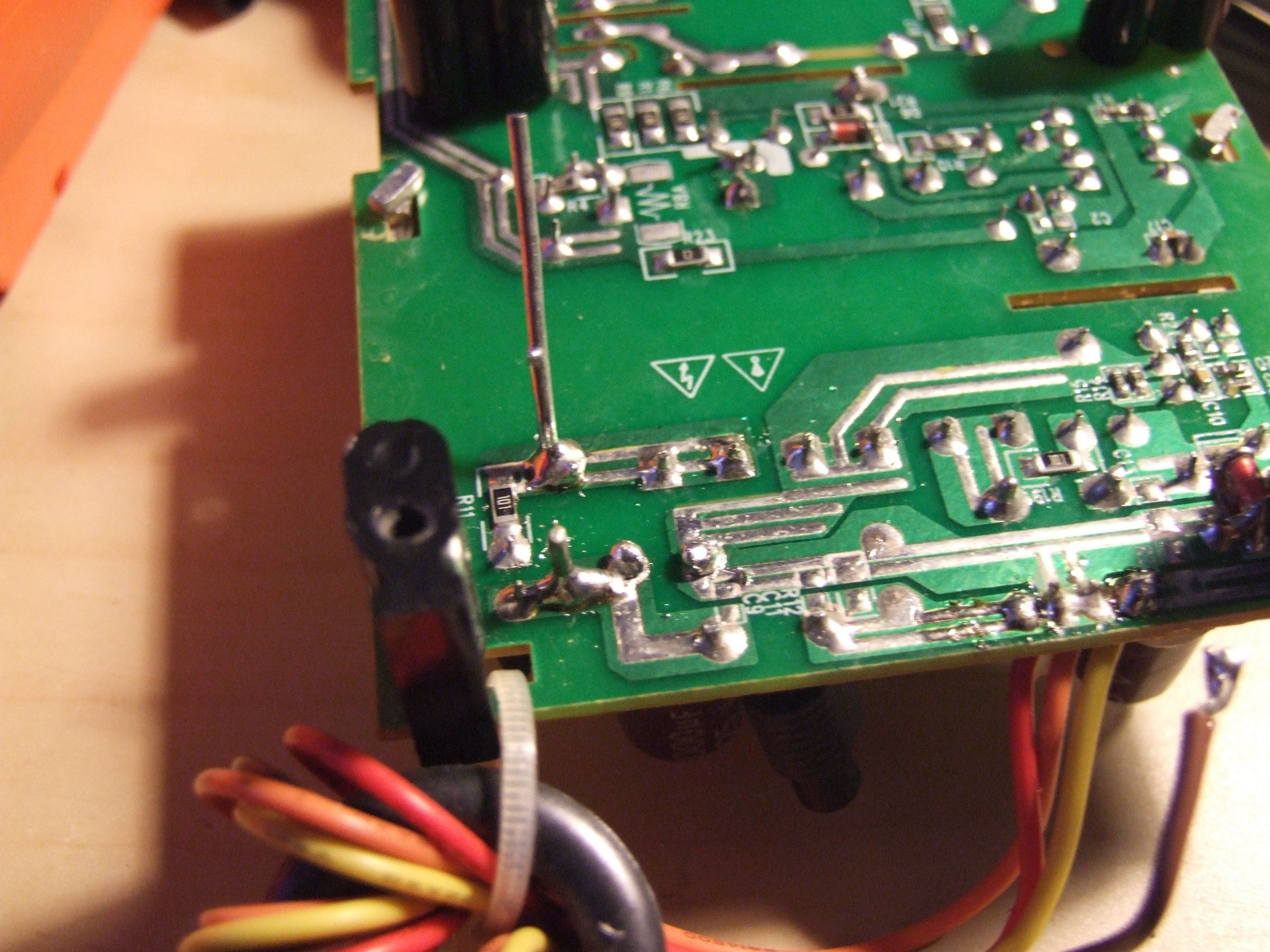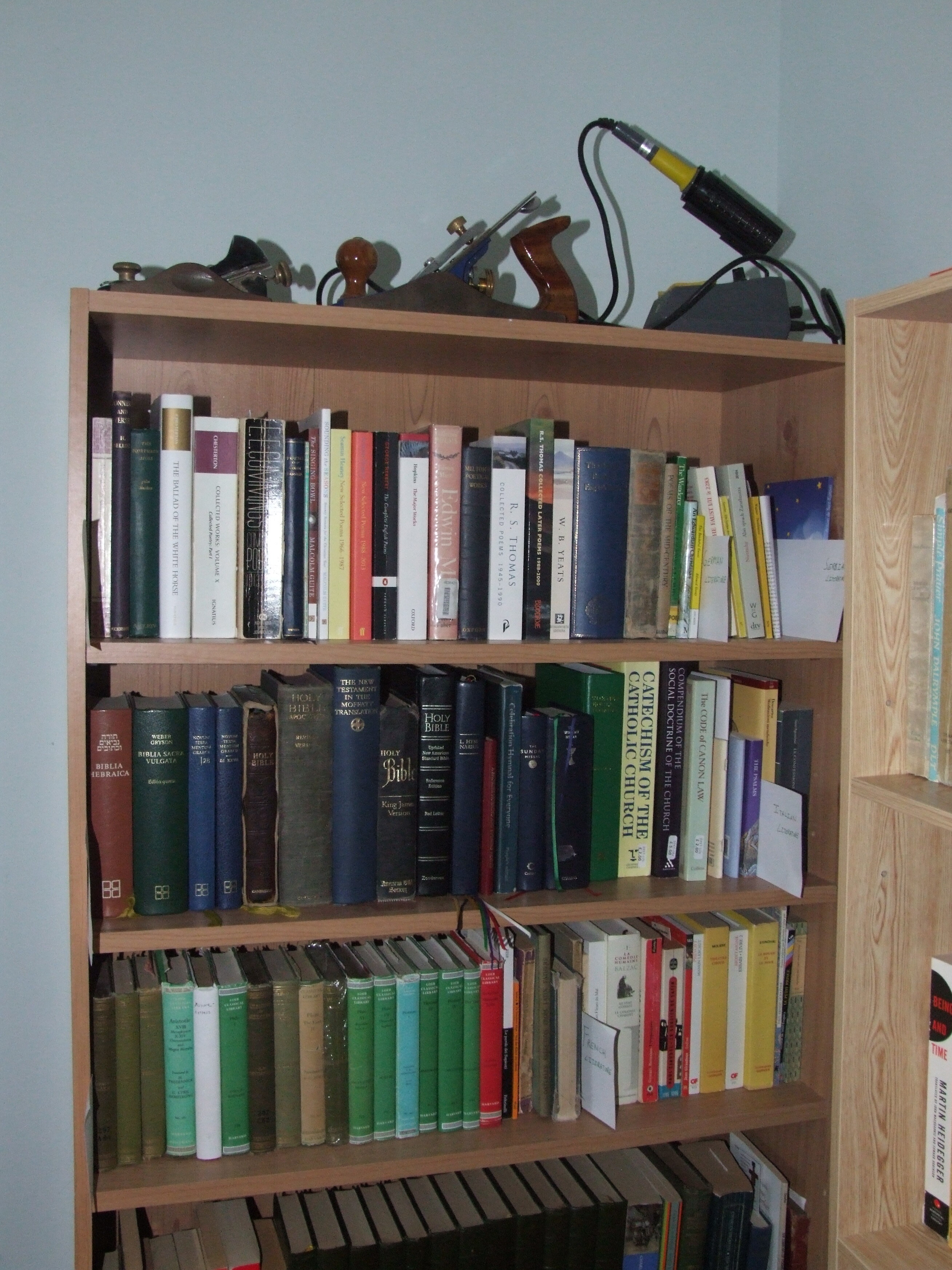The radio we use in the kitchen to make washing up bearable stopped working. Specifically, it wouldn’t turn on, but the power LED was constantly flashing on and then fading off. What makes me think the power supply might have died? Lo and behold, after purchasing a cheap multimeter (it’s incredible how cheaply one can get some things now: in ten years the price of test equipment has plumetted): the ‘8v’ output was about 3v, and the ‘15v’ output was 0v. Hmm. Here’s the very crude power supply:
Switchmode supplies like this one are very simple: on the bottom left the AC enters, is smoothed, and then rectified so it can be chopped up into higher frequency (in the KHz with this one—you can hear the transformer) PWM, passed through a step-down transformer (much more efficient at higher frequencies) and then rectified and smoothed again at the target voltage. The PWM duty cycle is adjusted to keep the voltage constant. For some reason surface mount components are still quite rare on these boards—there are a few resistors and diodes on the other side, but most things are still through-hole. Normally I’d like an oscilloscope to troubleshoot one of these things, but with only a cheap multimeter I probed a bit, and found that the 15v output was shorted to ground (obviously enough it was either shorted or disconnected). The usual culprit is the electolytic smoothing capacitor, so I desoldered it, but it was fine. Looking at the ouput circuitry a little harder, could it be the diode? It showed continuity both ways, and sure enough, with the 15V rectifying diode out of line the the 8V output worked (at 7.6v, but there we go). In the short term I removed the diode and ran the 15V output off the 8V, on the basis that I can’t see any use for 15V in a radio except to run the audio power amplifier:
…and it powered up, decoded enough DAB and started playing:
Not bad! A replacement Schottky Barrier Diode cost £0.45 on CPC (it would be less at Farnell proper, I’m sure—but my spare parts are at home, not here). So the whole radio, which retailed for a good deal more than the £10 we got it for from BHF I’m sure, would probably have been thrown out for a £0.45 diode. When the new one came I installed it and the 15V line came back to life (at 15.7V, so much for regulation).
I suspect the thing was faulty—the specs allow 150V and 30A breakdown, and I don’t see how one could get even close to that. But then, I doubt the switch-on regulation is very well designed. This, incidentally, is why electronics and practical engineering should be taught in schools: it’s not only economically and environmentally desirable, it gives one the enjoyment of seeing things come back to life. While I was at it, I blocked the cardboard borts on the speakers, which boom rather a lot: not entirely cured, but a good deal better. I’ve no idea why manufacturers over-port their speakers: I’d much rather listen to a rather trebly sound than have about a major third resonate and everything else sound oddly distorted. Tidying up I realised that this is rather a good photographic summary of student living:
